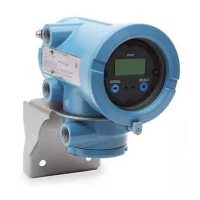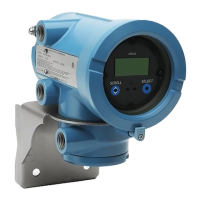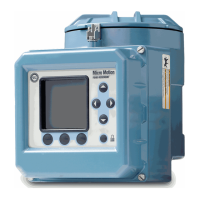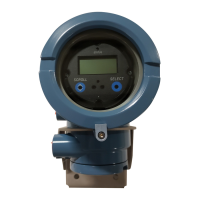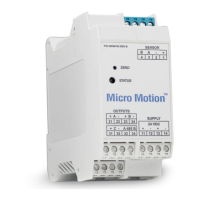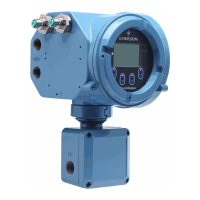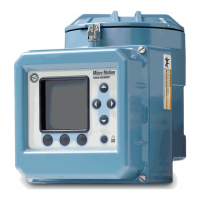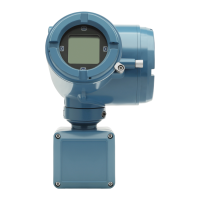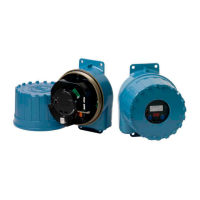Postrequisites
If you disabled LD Optimization before the calibration procedure, re-enable it.
9.5.2 Perform a D1 and D2 density calibration using ProLink III
Prerequisites
• During density calibration, the sensor must be completely filled with the calibration
fluid, and flow through the sensor must be at the lowest rate allowed by your
application. This is usually accomplished by closing the shutoff valve downstream
from the sensor, then filling the sensor with the appropriate fluid.
• D1 and D2 density calibration require a D1 (low-density) fluid and a D2 (high-
density) fluid. You may use air and water.
• If LD Optimization is enabled on your meter, disable it. To do this, choose Device Tools >
Configuration > LD Optimization. LD Optimization is used only with large sensors in
hydrocarbon applications. In some installations, only Micro Motion customer service
has access to this parameter. If this is the case, contact Micro Motion before
continuing.
• The calibrations must be performed without interruption, in the order shown. Make
sure that you are prepared to complete the process without interruption.
• Before performing the calibration, record your current calibration parameters. You
can do this by saving the current configuration to a file on the PC. If the calibration
fails, restore the known values.
Restriction
For T-Series sensors, the D1 calibration must be performed on air and the D2 calibration must be
performed on water.
Procedure
See Figure 9-8.
Measurement support
156 Micro Motion
®
Model 1700 Transmitters with Analog Outputs

